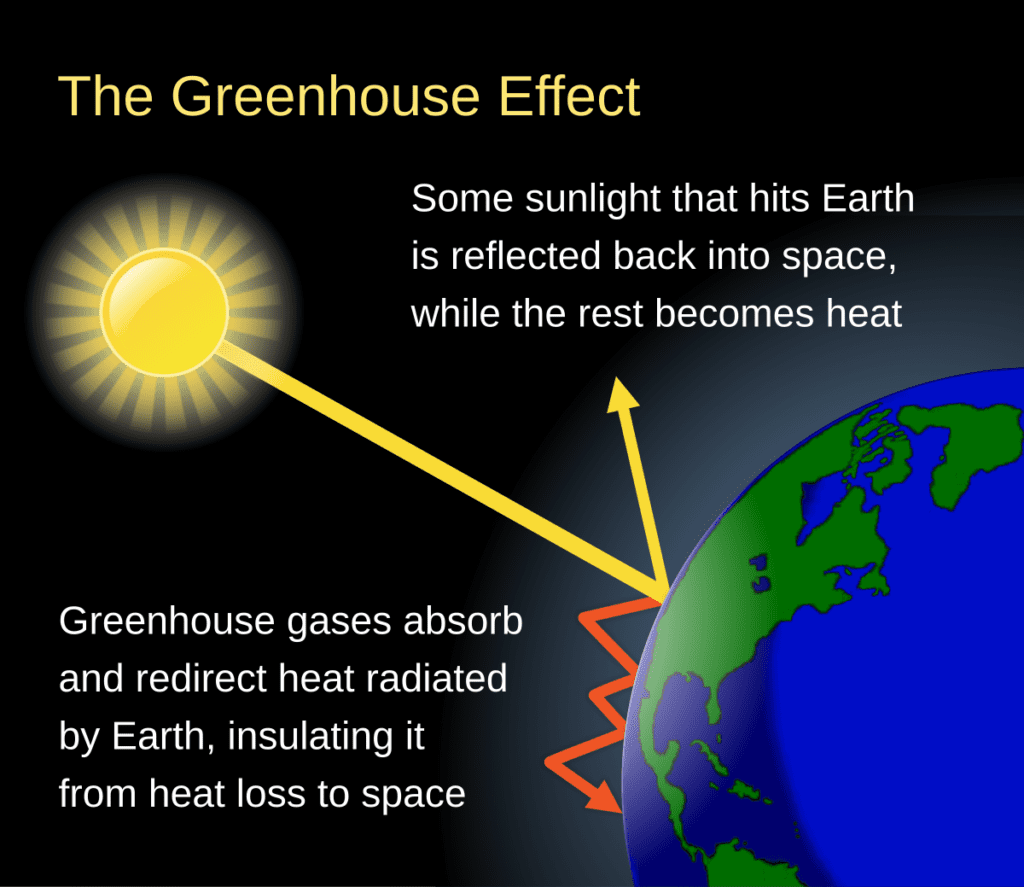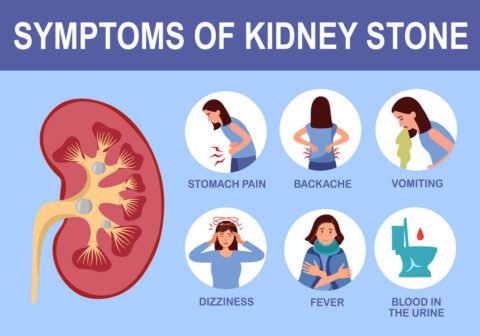The Effect of the Greenhouse Effect: Causes, Impacts, and Global Warming Explained
Welcome to our ultimate guide on the greenhouse effect and its effects on our planet. In this article, we cover everything from the basic definition of the greenhouse effect and greenhouse gases to a detailed discussion of global warming, climate change, and the harmful impacts on the environment and human health.
Whether you’re searching for “effect of greenhouse effect,” “greenhouse gases,” “greenhouse effect definition,” or “global warming and greenhouse gases,” you’ll find detailed answers to all these queries and more. We explain the theory behind the greenhouse effect, list the major greenhouse gases, describe their impacts, and discuss causes and consequences—including the enhanced and runaway greenhouse effects.
This guide also includes a brief note on the greenhouse effect in greenhouses versus in the Earth’s atmosphere, a discussion of carbon dioxide, methane, water vapor and other GHGs, and even project ideas and PowerPoint (PPT) suggestions for students.
1. Introduction
The greenhouse effect is a natural process by which the Earth’s atmosphere traps some of the Sun’s energy, warming the planet to temperatures that can sustain life. However, human activities have intensified this effect—leading to global warming and climate change.
In simple terms, the greenhouse effect occurs when greenhouse gases (GHGs)—such as carbon dioxide (CO₂), methane (CH₄), water vapor (H₂O), nitrous oxide (N₂O), and fluorinated gases—absorb and re‐emit infrared radiation in the atmosphere. This process helps keep our planet warm but, when excessive, it causes harmful warming.
In this guide, we will discuss:
- The definition and meaning of the greenhouse effect
- A list of major greenhouse gases and their sources
- The causes and effects of the greenhouse effect on global warming and climate change
- Scientific explanations, examples, and a brief history (greenhouse theory)
- How emissions and carbon footprints contribute to the effect
- Real-world impacts on the environment and human health
- And answers to many related queries such as “greenhouse gases list”, “effects of greenhouse gases”, “global warming potential of methane”, “runaway greenhouse effect”, and more.
2. What Is the Greenhouse Effect?
Definition: The greenhouse effect is the process by which the Earth's atmosphere traps some of the Sun’s radiation and re-radiates it, warming the planet. In its natural state, the greenhouse effect is essential for life, as it keeps our planet warm enough for living organisms to survive.
Simple Explanation: Think of the Earth as a greenhouse. When sunlight (shortwave radiation) enters, the Earth’s surface absorbs it and then emits longwave infrared radiation. Greenhouse gases in the atmosphere trap some of this infrared radiation, preventing it from escaping into space, thereby warming the Earth.
Greenhouse Effect Meaning: In summary, the greenhouse effect is a natural and necessary phenomenon; however, human-induced increases in greenhouse gas emissions have led to an enhanced greenhouse effect, contributing to global warming.
Many people search for “greenhouse effect definition”, “greenhouse effect meaning”, and “def of greenhouse effect” when trying to understand this basic concept.
3. Greenhouse Gases and Their Impact
Greenhouse gases (GHG) are the primary agents responsible for the greenhouse effect. They include:
- Carbon Dioxide (CO₂): The most significant anthropogenic GHG, produced by burning fossil fuels, deforestation, and various industrial processes.
- Methane (CH₄): Emitted during the production and transport of coal, oil, and natural gas; also released by livestock and other agricultural practices.
- Nitrous Oxide (N₂O): Produced by agricultural and industrial activities, as well as combustion of fossil fuels and solid waste.
- Fluorinated Gases: A group of synthetic chemicals used in a variety of industrial applications, which have a high global warming potential (GWP).
- Water Vapor (H₂O): Although it is the most abundant GHG, its concentration in the atmosphere is largely controlled by temperature.
Some searches include “greenhouse gases list”, “ghg gases”, “greenhouse gasses meaning”, and “major greenhouse gases”. These gases trap heat in the atmosphere, leading to the global warming effect and influencing the Earth’s climate.
4. Causes of the Enhanced Greenhouse Effect
While the natural greenhouse effect is vital for maintaining a habitable temperature on Earth, human activities have significantly increased the concentration of greenhouse gases. The primary causes include:
- Burning of Fossil Fuels: The combustion of coal, oil, and natural gas for energy and transportation releases large amounts of CO₂.
- Deforestation: Cutting down trees reduces the amount of CO₂ absorbed from the atmosphere.
- Agricultural Practices: Livestock farming produces methane, while certain farming practices release nitrous oxide.
- Industrial Processes: Many industrial activities emit fluorinated gases and other pollutants.
These activities contribute to an enhanced greenhouse effect, leading to increased global warming and climate change.
Queries such as “causes of greenhouse effect”, “causes of greenhouse gases”, and “top 10 causes of greenhouse effect” are commonly searched to understand these drivers.
5. Effects of the Greenhouse Effect on Global Warming and Climate Change
The enhanced greenhouse effect has led to a range of environmental impacts, most notably global warming. As more greenhouse gases accumulate in the atmosphere, more heat is trapped, raising the Earth’s average temperature. Some of the key effects include:
- Global Temperature Rise: Increased atmospheric temperatures, which affect weather patterns worldwide.
- Melting of Polar Ice Caps and Glaciers: Contributing to rising sea levels and loss of habitat.
- Changes in Precipitation Patterns: Increased frequency and intensity of extreme weather events, such as heavy rainfall and droughts.
- Ocean Acidification: Excess CO₂ absorbed by the oceans is leading to changes in marine ecosystems.
- Impacts on Biodiversity: Changes in climate and habitats can lead to species migration and even extinction.
Many search terms—such as “global warming effect”, “effects of greenhouse gases”, “greenhouse effect and global warming”, and “global warming greenhouse effect”—reflect concern about these widespread impacts.
6. The Role of Specific Greenhouse Gases
Different greenhouse gases contribute to the overall warming effect in various ways:
Carbon Dioxide (CO₂)
CO₂ is the most significant contributor due to its high volume of emissions from fossil fuel combustion and deforestation. It has a relatively lower global warming potential compared to some other gases but its long atmospheric lifetime makes it a critical driver of climate change.
Methane (CH₄)
Methane is more potent than CO₂ in the short term, with a global warming potential approximately 25 times greater over a 100‐year period. It is released from livestock, landfills, and natural gas systems.
Nitrous Oxide (N₂O)
With a global warming potential about 298 times that of CO₂, nitrous oxide is mainly emitted from agricultural and industrial activities.
Fluorinated Gases
These synthetic gases have very high global warming potentials, though they are emitted in smaller quantities.
Searches such as “greenhouse gases methane”, “water vapor greenhouse gas”, “global warming potential of methane”, and “major greenhouse gases” are common as people seek to understand the relative impacts of each gas.
7. Global Warming, Climate Change, and the Greenhouse Effect
The enhanced greenhouse effect is the primary cause of global warming—a long-term rise in the average temperature of the Earth. Global warming triggers a cascade of changes in our climate, including altered weather patterns, increased frequency of extreme events, and shifts in ecosystems.
The term climate change refers to the broader range of changes that are happening to our planet, including temperature increases, melting ice caps, rising sea levels, and changes in precipitation.
The link between greenhouse gases, the greenhouse effect, and global warming is well established. Many search queries—such as “greenhouse effect and global warming”, “global warming greenhouse gases”, and “greenhouse gases and climate change”—reflect the need to understand these interconnected issues.
8. The Enhanced and Runaway Greenhouse Effect
Enhanced Greenhouse Effect: This term refers to the human-induced increase in greenhouse gas concentrations in the atmosphere. By adding extra CO₂, CH₄, and other gases, we amplify the natural greenhouse effect, leading to additional warming.
Runaway Greenhouse Effect: A more extreme scenario, the runaway greenhouse effect, occurs when the warming becomes so severe that it triggers further increases in temperature in a self-reinforcing cycle. This phenomenon is often discussed in the context of Venus and is a warning of what could happen if greenhouse gas emissions continue unchecked.
These terms are key to understanding the potential long-term impacts on our planet. Look for queries like “runaway greenhouse effect” and “enhanced greenhouse effect” when researching these critical issues.
9. Global Warming Potential (GWP) of Greenhouse Gases
The Global Warming Potential (GWP) is a measure of how much heat a greenhouse gas traps in the atmosphere relative to carbon dioxide over a specific time period. For example, methane (CH₄) has a GWP of approximately 25 over 100 years, meaning it is 25 times more potent than CO₂ in trapping heat.
Understanding GWP helps in comparing the effects of different gases. Common queries include “global warming potential of methane” and “greenhouse gases effect on climate change.”
10. Carbon Footprint and Emission of Greenhouse Gases
A carbon footprint measures the total amount of greenhouse gases produced directly and indirectly by human activities, usually expressed in equivalent tons of CO₂. The emission of greenhouse gases comes from various sources:
- Burning fossil fuels for electricity and transportation
- Industrial processes and manufacturing
- Deforestation and land use changes
- Agricultural activities, including livestock production
Searches such as “emission of greenhouse gases” and “causes of carbon footprint” are common among those looking to reduce their impact on the environment.
11. Effects of Greenhouse Gases on the Environment
The increased concentration of greenhouse gases in the atmosphere has several harmful effects on the environment:
- Rising Temperatures: More heat is trapped, leading to global warming.
- Melting Ice and Rising Sea Levels: Polar ice caps and glaciers melt, contributing to sea level rise.
- Extreme Weather: Increased frequency and intensity of storms, droughts, and heat waves.
- Ocean Acidification: Absorption of excess CO₂ causes chemical changes that can harm marine life.
- Disruption of Ecosystems: Changes in temperature and weather patterns affect biodiversity and habitat stability.
Many search phrases like “greenhouse effect impact on environment”, “global warming effect on environment”, and “effects of carbon dioxide on the environment” reflect concerns over these issues.
12. Human Health Impacts and Societal Effects
The consequences of an enhanced greenhouse effect are not limited to the natural environment—they also affect human health and society. Rising temperatures and extreme weather events can lead to:
- Heat-related illnesses and deaths
- Respiratory problems from increased air pollution
- Disruption of food and water supplies
- Increased frequency of natural disasters, leading to economic and social disruptions
Queries such as “co2 effects on environment”, “effects of methane on the environment”, and “carbon dioxide effects on humans and environment” address these concerns.
13. Greenhouse Effect in Greenhouses vs. the Earth’s Atmosphere
Although they share a name, the greenhouse effect in a garden greenhouse and the greenhouse effect in the Earth’s atmosphere work differently. In a greenhouse, glass or plastic panels trap heat, keeping plants warm. In the Earth’s atmosphere, greenhouse gases trap infrared radiation.
This distinction is important to understand because the principles in a controlled greenhouse are used metaphorically to explain the natural process that warms our planet.
14. A Brief Note on the Greenhouse Effect
In summary, the greenhouse effect is a natural process that warms the Earth by trapping some of the Sun’s energy. However, human activities have enhanced this effect, leading to global warming and climate change. This brief note encapsulates the key idea: the Earth’s atmosphere acts like a blanket, keeping our planet warm—but when too many greenhouse gases are added, the blanket becomes too thick.
15. Greenhouse Effect Theory and Its Historical Background
The greenhouse effect has been studied for more than a century. Early scientists such as Svante Arrhenius first described the relationship between CO₂ emissions and global warming. The theory has since evolved with more advanced models and observations.
Historical discussions often refer to “greenhouse theory” and explain how natural processes maintain the Earth’s temperature—and how human actions have altered this balance.
16. Global Warming, Climate Change, and the Greenhouse Effect
Global warming is one of the most significant effects of the enhanced greenhouse effect. As more greenhouse gases accumulate, the Earth’s average temperature rises, leading to climate change. These changes affect weather patterns, sea levels, and ecosystems.
Many search for “greenhouse effect and global warming”, “global warming greenhouse effect”, and “greenhouse gases and global warming” to understand these connections.
17. Emissions and the Increase in Greenhouse Gases
Human activities—especially the burning of fossil fuels and deforestation—have led to increased emissions of greenhouse gases. This rise in emissions is directly linked to the enhanced greenhouse effect.
By understanding the sources of these emissions, we can better target strategies to reduce our carbon footprint and mitigate global warming. Search terms such as “emission of greenhouse gases” and “causes of carbon footprint” are key in this discussion.
18. The Role of Carbon Dioxide, Methane, and Water Vapor
Among all greenhouse gases, carbon dioxide (CO₂), methane (CH₄), and water vapor (H₂O) play pivotal roles:
- Carbon Dioxide: The primary anthropogenic greenhouse gas, produced by burning fossil fuels and deforestation.
- Methane: A potent greenhouse gas with a high global warming potential, emitted from agriculture, landfills, and fossil fuel production.
- Water Vapor: Although a natural greenhouse gas, its concentration in the atmosphere increases with temperature, reinforcing the warming effect.
Queries like “carbon dioxide in greenhouse gases”, “methane and greenhouse gases”, and “water vapour greenhouse gas” are frequently used by those studying climate science.
19. The Runaway Greenhouse Effect and Its Implications
The runaway greenhouse effect is an extreme scenario where the warming caused by greenhouse gases triggers additional feedback that further increases temperatures. This phenomenon is often discussed in relation to Venus but serves as a cautionary example for Earth.
While scientists believe a runaway scenario on Earth is unlikely under current conditions, it underscores the potential for catastrophic climate change if greenhouse gas emissions continue to rise unchecked.
20. Global Warming Effects on the Environment and Human Health
The consequences of an enhanced greenhouse effect extend far beyond rising temperatures:
- Environmental Impacts: Melting polar ice, rising sea levels, more frequent and severe weather events, ocean acidification, and disruption of ecosystems.
- Human Health: Increased risk of heat-related illnesses, respiratory problems from poor air quality, and challenges in food and water security.
These effects are central to searches such as “global warming effect on environment”, “effects of carbon dioxide on the environment”, and “greenhouse effect impact.”
21. Carbon Footprint and the Effects of CO₂ Emissions
Carbon dioxide is the most well-known greenhouse gas, and its increase in the atmosphere is a primary driver of climate change. The carbon footprint of human activities measures the total CO₂ emissions produced.
High levels of CO₂ not only warm the planet but also contribute to ocean acidification and other environmental disturbances. Searches such as “co2 effects on environment” and “carbon dioxide effects on humans and environment” highlight the widespread concern over these emissions.
22. Examples and Visual Aids: Greenhouse Effect PPTs and Projects
Educators and students often search for “greenhouse effect project” and “green house effect ppt” to obtain visual aids and project ideas. These resources can help explain complex topics in a clear, engaging manner.
A typical PowerPoint presentation on the greenhouse effect might include:
- An overview of the greenhouse effect and its natural role
- A list of major greenhouse gases and their sources
- Diagrams showing how infrared radiation is absorbed and re-emitted
- Examples of global warming effects, such as melting ice caps and extreme weather events
- Discussion of mitigation strategies and renewable energy solutions
These visual aids make the science more accessible and can be adapted for classroom projects or public presentations.
23. Greenhouse Effect: A Brief Note and Easy Definition
In the simplest terms, the greenhouse effect is the process by which greenhouse gases trap heat in the Earth’s atmosphere, warming the planet to a temperature that can support life. This process is natural and necessary, but human activities have enhanced it, leading to global warming.
An easy definition might be: “The greenhouse effect is the warming of Earth’s surface caused by the trapping of the Sun’s heat by the atmosphere.”
24. Discussing and Explaining the Greenhouse Effect in Detail
Let’s take a deeper look at how the greenhouse effect works. When sunlight reaches the Earth, most of it passes through the atmosphere and warms the surface. The Earth then emits infrared radiation. Greenhouse gases, such as CO₂ and methane, absorb this infrared radiation and re-emit it in all directions, including back toward the Earth, thereby warming the surface further.
This process can be summarized by the energy balance equation:
\[ \text{Incoming Solar Radiation} - \text{Reflected Radiation} = \text{Outgoing Infrared Radiation (trapped by GHGs)} \]
The more greenhouse gases in the atmosphere, the more infrared radiation is trapped, leading to higher temperatures—a phenomenon that underlies global warming.
25. Impact on Climate Change and the Environment
The enhanced greenhouse effect is the primary driver of climate change. As greenhouse gas concentrations increase, the balance between incoming and outgoing radiation shifts, causing a rise in global temperatures. This warming has several environmental consequences:
- Melting of polar ice and glaciers
- Rising sea levels and coastal erosion
- Changes in weather patterns and more frequent extreme weather events
- Shifts in ecosystems and loss of biodiversity
- Ocean acidification affecting marine life
Such effects are widely researched and discussed under search terms like “global warming effect on environment,” “greenhouse gases effect on global warming,” and “effects of greenhouse gases.”
26. The Role of Water Vapor as a Greenhouse Gas
Although water vapor is the most abundant greenhouse gas, it differs from other GHGs in that its concentration is controlled by temperature rather than direct human emissions. Warmer air holds more water vapor, which in turn traps more heat, creating a feedback loop.
Search phrases like “water vapor greenhouse gas” and “water vapour greenhouse gas” are used by those studying this crucial component of the greenhouse effect.
27. Global Warming Potential (GWP) of Different Greenhouse Gases
Global Warming Potential (GWP) is a metric that compares the ability of different greenhouse gases to trap heat in the atmosphere relative to carbon dioxide (CO₂) over a specific time frame (typically 100 years). For instance:
- Methane (CH₄): Approximately 25 times more potent than CO₂.
- Nitrous Oxide (N₂O): About 298 times more potent than CO₂.
Understanding GWP is essential when comparing the environmental impacts of various gases. Queries like “global warming potential of methane” are common among researchers.
28. Carbon Dioxide: The Most Abundant Anthropogenic Greenhouse Gas
Carbon dioxide (CO₂) is the primary greenhouse gas emitted through human activities. It plays a central role in the enhanced greenhouse effect because of the sheer volume produced from fossil fuel combustion, cement production, and deforestation.
Many discussions on “carbon dioxide in greenhouse gases” and “co2 effects on environment” focus on its impact on global warming.
29. Methane and Its Effects on the Environment
Methane (CH₄) is a powerful greenhouse gas with a high global warming potential. It is released by natural sources as well as human activities such as agriculture (e.g., livestock digestion), waste management, and fossil fuel extraction.
Its potent effect, even in lower concentrations, makes it a critical focus in the discussion of global warming. Look for search queries like “global warming potential of methane” and “methane and greenhouse gases” to explore these effects.
30. Nitrous Oxide and Fluorinated Gases
Beyond CO₂ and methane, nitrous oxide (N₂O) and fluorinated gases are also important. Nitrous oxide is released mainly through agricultural activities and industrial processes, while fluorinated gases are synthetic and have extremely high global warming potentials.
Understanding the impact of these gases is essential for comprehensive climate change mitigation strategies.
31. The Enhanced Greenhouse Effect and Global Warming
The term “enhanced greenhouse effect” refers to the human-caused increase in greenhouse gas concentrations, which intensifies the natural greenhouse effect. This enhancement leads to global warming, with widespread impacts on weather, sea levels, and ecosystems.
Searches such as “greenhouse effect and global warming” and “global warming greenhouse effect” highlight the critical link between these phenomena.
32. Runaway Greenhouse Effect: Definition and Explanation
The runaway greenhouse effect is a scenario in which the warming of the planet triggers a feedback loop that leads to ever-increasing temperatures. This phenomenon is best exemplified by Venus, where a thick atmosphere of CO₂ has led to extreme surface temperatures.
Although a runaway greenhouse effect on Earth is not expected under current conditions, understanding the concept is important for recognizing the potential dangers of uncontrolled greenhouse gas emissions.
33. Greenhouse Gases and Climate Change: A Summary
In summary, the greenhouse effect is a natural process that warms our planet, but human activities have enhanced this effect by increasing the concentration of greenhouse gases. This enhanced greenhouse effect leads to global warming and climate change, which have profound impacts on the environment, weather patterns, sea levels, and human health.
Understanding the roles of CO₂, methane, water vapor, and other gases is essential for addressing climate change.
34. Greenhouse Gases: List, Examples, and Major Contributors
Below is a list of some of the most important greenhouse gases:
- Carbon Dioxide (CO₂)
- Methane (CH₄)
- Nitrous Oxide (N₂O)
- Fluorinated Gases (such as HFCs, PFCs, and SF₆)
- Water Vapor (H₂O)
You may see queries like “list of greenhouse gases,” “greenhouse gases name,” “name three greenhouse gases,” and “major greenhouse gases.”
35. Impact of the Greenhouse Effect on Global Ecosystems and Biodiversity
The effects of the greenhouse effect are far-reaching. As global temperatures rise, ecosystems are disrupted, species migration patterns change, and biodiversity is threatened. These changes affect agriculture, fisheries, forestry, and natural habitats.
Look for search terms such as “global warming effect on environment,” “greenhouse effect impact,” and “effects of greenhouse gases” to understand these complex relationships.
36. Carbon Dioxide, Methane, and Their Effects on Humans
The accumulation of greenhouse gases in the atmosphere not only affects the environment but also has significant implications for human health. Increased CO₂ levels can contribute to respiratory problems, and the resulting climate change may lead to heat stress, food shortages, and other public health challenges.
Searches such as “effects of carbon dioxide on the environment,” “co2 effects on environment,” and “carbon dioxide effects on humans and environment” are vital in understanding these issues.
37. Mitigation Strategies and Reducing Greenhouse Gas Emissions
To combat the enhanced greenhouse effect and global warming, it is essential to reduce greenhouse gas emissions. Strategies include:
- Transitioning to renewable energy sources
- Improving energy efficiency
- Reforestation and afforestation projects
- Adopting sustainable agricultural practices
- Implementing carbon capture and storage (CCS) technologies
Understanding these mitigation strategies is crucial for addressing climate change. Searches such as “causes of carbon footprint” and “emission of greenhouse gases” often lead to discussions about these solutions.
38. The Greenhouse Effect in Popular Culture and Education
The greenhouse effect has become a central theme in public discussions about climate change. It is featured in educational projects, PowerPoint presentations (PPTs), and school projects. Whether you are preparing a project on “greenhouse effect project” or searching for “green house effect in hindi,” understanding this concept is critical.
Many educational resources provide a “brief note on the greenhouse effect” or “greenhouse effect explanation” to help students and the general public understand this complex topic.
39. Short Notes and Easy Definitions for the Greenhouse Effect
For quick reference, here is an easy definition: The greenhouse effect is the natural process by which greenhouse gases trap heat in the Earth's atmosphere, warming the planet. When human activities increase these gases, the effect is enhanced, leading to global warming.
This simple explanation is ideal for presentations and educational materials, and is often requested as a “greenhouse effect simple definition” or “brief note on greenhouse effect.”
40. Greenhouse Gases – Visual Aids and Charts
Visual representations, such as charts and graphs, help clarify the data behind greenhouse gas emissions and their impacts. A greenhouse gases effect chart or greenhouse gases list chart can visually compare the global warming potentials (GWPs) of different gases.
These tools are frequently used in educational presentations and are useful when searching for “greenhouse gases ppt” or “greenhouse gases description.”
41. The Natural vs. Enhanced Greenhouse Effect
It is important to differentiate between the natural greenhouse effect, which is essential for life on Earth, and the enhanced greenhouse effect, which is primarily the result of human activities.
The natural greenhouse effect keeps the Earth at a livable temperature, while the enhanced effect causes additional warming, leading to climate change. This topic is sometimes simply referred to as “greenhouse effect” or “effect of green house.”
42. Global Warming, Climate Change, and Future Projections
Scientific models predict that if greenhouse gas emissions continue to increase, global temperatures will rise even further, leading to more severe climate change. Future projections include higher sea levels, more extreme weather events, and widespread ecological disruption.
Many researchers and concerned citizens look for “global warming effect on environment” and “global warming greenhouse gases” to understand these future scenarios.
43. Educational Projects, Presentations, and Research on the Greenhouse Effect
If you’re a student or educator, numerous resources are available for projects and presentations on the greenhouse effect. From school projects to college research, materials such as “greenhouse effect project for students” and “green house effect ppt” provide valuable insights and visual aids.
These resources are designed to make the complex science behind the greenhouse effect accessible and engaging.
44. Summary and Final Thoughts
The greenhouse effect is a fundamental natural process that warms our planet. However, the enhanced greenhouse effect—driven largely by human-induced emissions of CO₂, methane, and other greenhouse gases—is a major contributor to global warming and climate change.
In this guide, we have defined the greenhouse effect, listed and described the major greenhouse gases, discussed the causes and effects of increased greenhouse gas emissions, and examined the impacts on the environment and human health. We also reviewed related concepts such as global warming potential, the natural versus enhanced greenhouse effect, and the concept of runaway greenhouse effect.
Whether you’re a concerned citizen, student, or professional, understanding these processes is essential for making informed decisions about energy, policy, and our future. It is our hope that this guide has answered your questions—ranging from “greenhouse effect explained” to “list of greenhouse gases” and “effects of greenhouse gases”—and provided you with the knowledge to participate in meaningful discussions about climate change.
Remember, the greenhouse effect is both a natural phenomenon and a human-made challenge. Addressing it requires global cooperation, technological innovation, and a commitment to sustainable practices.
Thank you for reading this comprehensive guide on the effect of the greenhouse effect. We encourage you to explore the additional resources and references provided below for further learning.
45. References and Further Reading
For additional information on the greenhouse effect and its impacts, consider exploring the following resources:
- Intergovernmental Panel on Climate Change (IPCC)
- NASA – Climate Change and Global Warming
- U.S. EPA – Greenhouse Gas Emissions
- National Geographic – Global Warming
- NASA Climate Change
These websites provide detailed reports, data, and visuals that further explain the greenhouse effect, global warming, and climate change.





